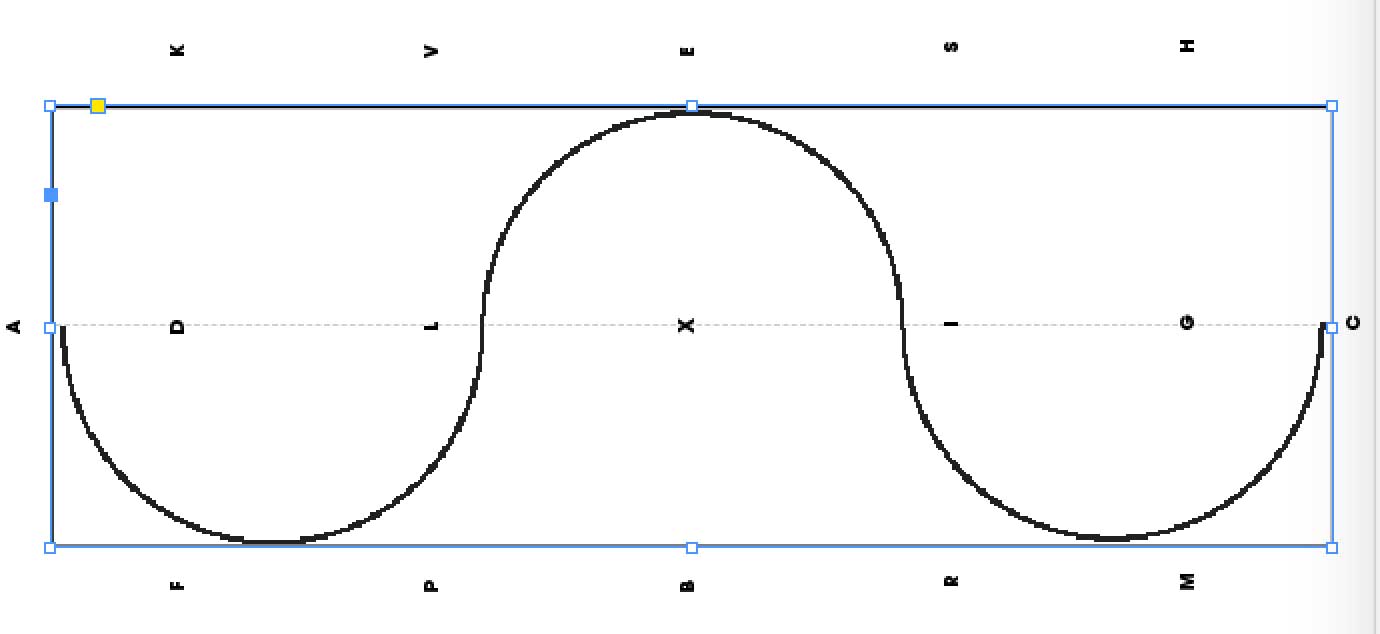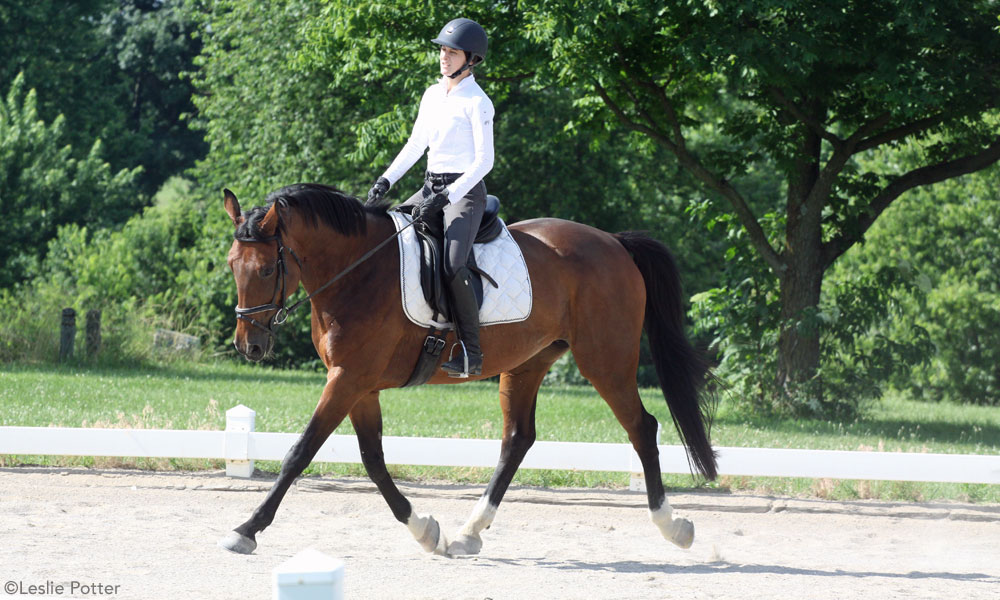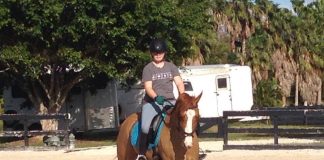The serpentine is introduced at Training Level in competition, but it’s practiced by savvy dressage riders at all levels. Here’s how to ride a serpentine.
Riding A Serpentine: Geometry 101
The standard dressage arena is 20 x 60 meters, so each loop of a three-loop serpentine is a 20-meter half-circle. The loops are connected by one horse-length of straightness over the center line.
The arena letters can give riders a false sense of where to place the loops. Looking at the diagram, you’ll notice that the three-loop serpentine does not cross the center line exactly at a letter. If you make the common mistake of crossing the center line at I and L, you’ll actually be making two 18-meter loops and a 24-meter center loop, which will cost you points in the show ring.

Another common mistake is riding a diagonal line between loops. The horse’s body is supposed to be parallel to the short side of the arena as he crosses the center line. To do this, you have to bend him correctly for the first loop, straighten him momentarily, and then smoothly bend him in the opposite direction with no interruption in the trot tempo. Not as easy as it sounds!
Hone the Accuracy
Another tip for riding a serpentine is to hone in on the accuracy. Let’s say you’re trotting on the left rein, riding a three-loop serpentine from A to C. As you pass A, cut the corner a bit as you begin the first loop. Touch the rail about halfway between the corner letter (F) and the next letter (P), then look to the point where you want to cross the center line, two meters past L.

Ride straight as you cross the center line. If you’re in rising trot and choose to change posting diagonals, this is where you’ll do so. Then bend right and ride the middle loop so that you touch the rail at E. Look to your next center line, two meters shy of I.
Show a moment of straightness before you bend left for the third loop, again cutting the corner slightly. After you pass C, ride a true corner.
Serpentine Variations
Up the difficulty by riding four trot loops instead of three, or make it easier by riding shallower loops. A “ribbon candy” figure with continuously curving lines develops suppleness. In the canter, ride three loops with changes of lead over the center line through the trot or, later, through the walk. As dressage horses advance in their training, loops and serpentines are great for schooling the counter-canter and even flying changes of lead. That’s why the serpentine is a staple of dressage training at all levels and it is important on knowing how to ride it.
This article originally appeared in the May 2019 issue of Horse Illustrated magazine. Click here to subscribe!





